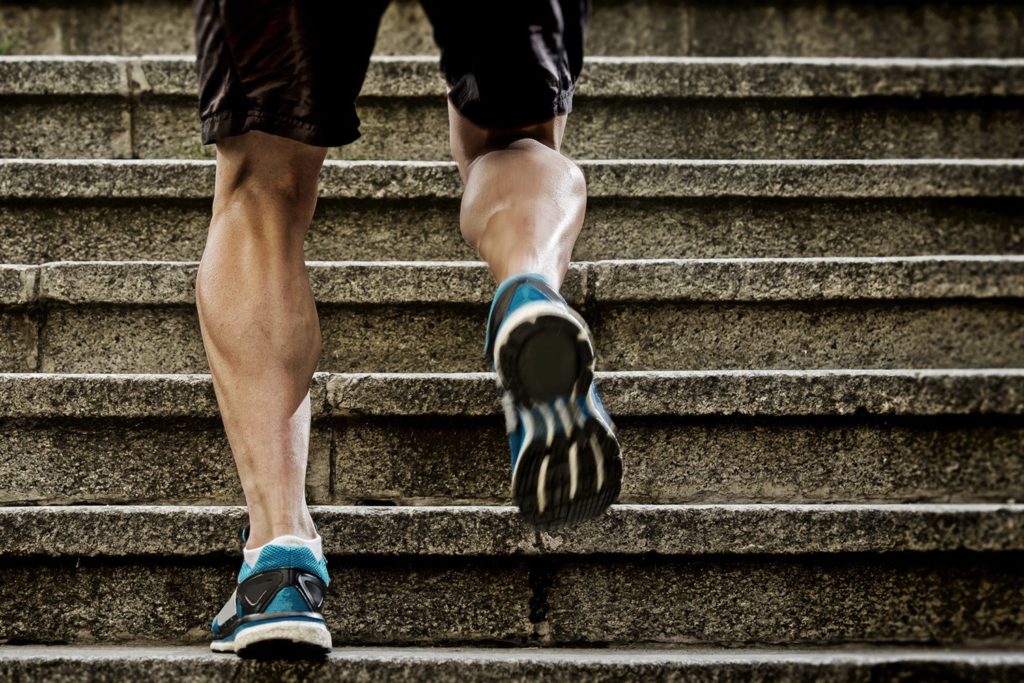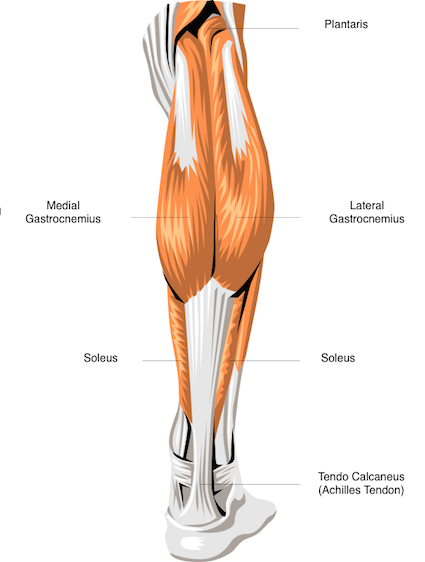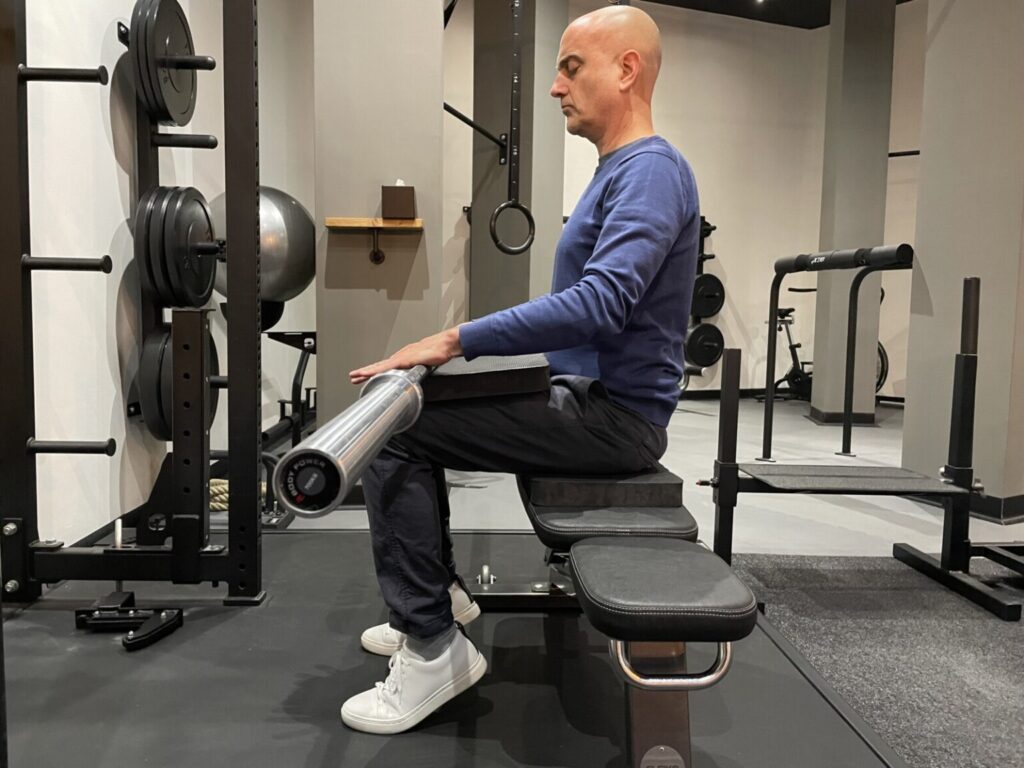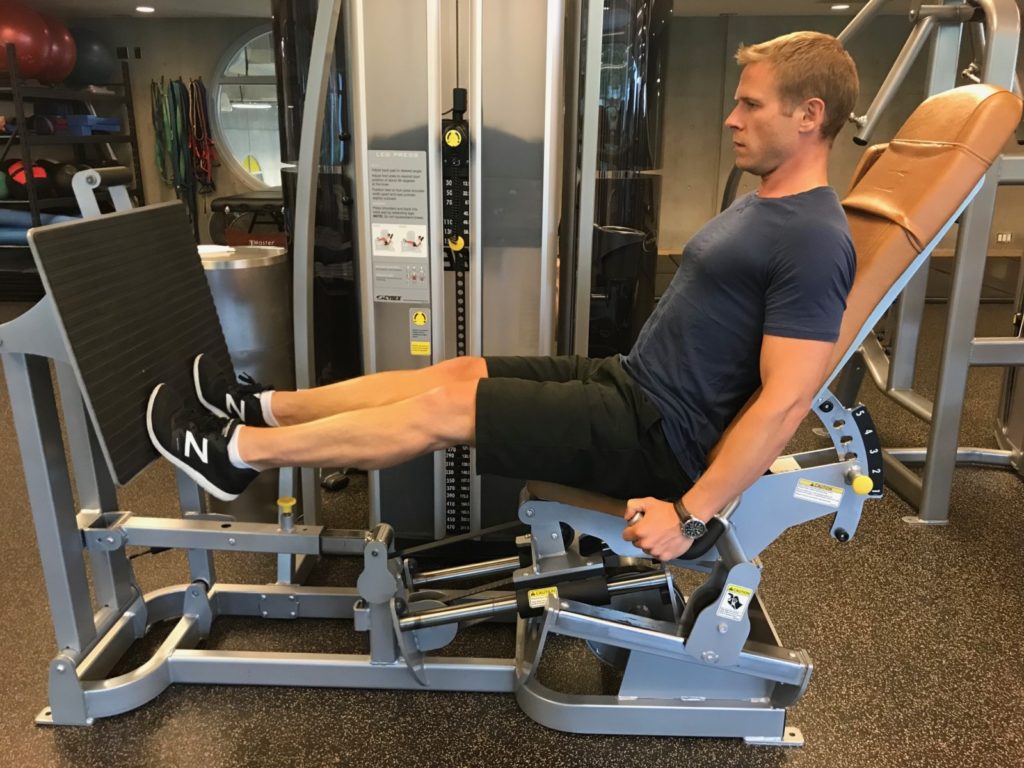In this post we discuss why you should train your calf muscles to slow down the ageing process and the best exercises to use.

What if I told you there was a group of muscles that can help prevent the changes in running and walking that are associated with age?
What if I also told you this muscle group shows predictable deterioration with age?
And that this deterioration usually occurs in advance of other muscles?
You’d probably guess that everybody over the age of 50 would be training these muscles wouldn’t you?
Unfortunately not. In fact these muscles receive very little attention past a brief stretch post workout.
The calf muscles

These include the gastrocnemius, soleus, plantaris, posterior tibialis, peroneus longus and peroneus brevis.
These muscles are the first to react to sudden changes in posture, such as when stepping on an uneven pavement.
They are responsible for both cushioning the impact of running or walking and providing the necessary propulsion to move us forwards.
This information is not new. Numerous studies have showed age related reductions in strength and the importance of these muscles in balance but few exercise programmes target them directly.
Why people don’t train their calf muscles
There’s a common misconception that these muscles will be trained when you perform multi joint exercises such as squats and lunges.
This is true to a certain extent, but these exercises won’t work the calves through their complete range of motion.
They also won’t load these muscles sufficiently.
Put simply, has fatigue in your calves ever brought a set of squats to an end?
Never in my experience and probably not yours either.
Secondly, many people exercise for asthetic goals such as weight loss or muscle gain in specific areas. Few think about optimising the function of their muscular system.
It’s possible to do all three if you’re intelligent about it.
In fact optimising the function of your muscular system will likely help you attain every goal, whatever that may be.
The best exercises to strengthen your calf muscles
There are two main options, the seated calf raise and the standing version.
The knee flexion involved in the seated version may reduce the ability of both plantaris and gastrocnemius to contribute as they both attach above the knee.
This enables you to bias soleus, posterior tibialis and peroneus longus and brevis.
Anecdotally I find the seated version creates less irritation of Achilles tendon issues and can illuminate deficits in function that are sometimes missed in the standing version.
The big problem with this exercise is that without access to a seated calf raise machine, or a Smith machine, it’s difficult to challenge these muscles.
They require a significant load which you may need assistance with.
Seated calf raise exercise

Sit on a bench with your knees bent to around 90 degrees. Make sure you can lift each leg off the ground slightly without moving your trunk.
Slowly slide your feet back towards you until you reach your limit of dorsiflexion.
You can check this by trying to lift the front of each foot off the floor. You should be able to just about achieve this on both. If you can’t, slide your feet a little further away.
Place a weight across your thighs (or have somebody place it for you).
Slowly raise your heels off the ground as high as they will go, without lifting the knuckle of your big toe (1st MTP joint) off the floor.
Hold the top position for a second before slowly lowering your heels back to just above the floor.
Standing calf raise exercise

The standing version could be argued to be more functional in relation to walking and running because it matches the length / tension relationships of both.
As the weight of your body can also be brought to bear, it makes loading in this position easier.
My first choice however is always a suitable leg press (pictured) as this allows you to accurately add more resistance as you get stronger.
Other options are the Smith machine again, or single leg versions.
Ensure you don’t let the resistance take your ankle into a position you can’t get to under your own control. Also keep the balls of your feet firmly planted on the platform.
Summary
Training your calf muscles should be an integral part of your resistance training programme whatever your goal.
Maintaining the strength of these muscles may also slow down the changes in walking and running gait that are associated with the ageing process.
Learn more about exercise and ageing with our FREE comprehensive guide.